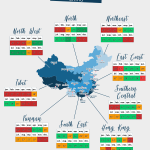The Zhoukoudian Relics Museum of palaeoanthropology is located in Fangshan District in Beijing. The museum’s construction first began in 1953, totaling 1,000 square meters. It systematically introduces the life, environment and conditions of the Peking Man who existed 600,000 years ago, the Xindong Man of 100,000 years ago and the Upper Cave Man of 18,000 years ago.
In 1929, Chinese palaeoanthropologist Pei Wenzhong unearthed the first complete fossilized skull from the Peking Man in Longgu Mountain — a discovery that shook the world. In 1936, anthropologist Jia Lanpo discovered another three fossilized skulls of the Upper Cave Man. In the late 1960s, the Xindong Man relics that existed 100,000 years ago were excavated in the same place. The series of important discoveries provided a critical element for the research of the origin of mankind. Zhoukoudian was listed in the Protected Cultural Relics by the State Council of China and World Cultural Heritage by UNESCO.
The front of the exhibition hall is a solid model of Longgu Mountain, with stone specimens dating back 100 to 400 million years in the Zhoukoudian area in the display cabinets, reflecting the geological changes in history. The models of the fossilized skulls, the fire relics and various stone tools of the Peking Man are exhibited in the No.1 Hall. The restored cave of the Upper Cave Man is in the No. 2 Hall. The No.3 Hall contains a necklace made by the Upper Cave Man as well as a model of the distribution of amniotes fossils and the dwellings of the ancient people. In the No.4 Hall are fossils of the ancient people found both in China and all over the world at different periods, stone tools and drawings, paintings and other artworks of the Paleolithic Period.





















